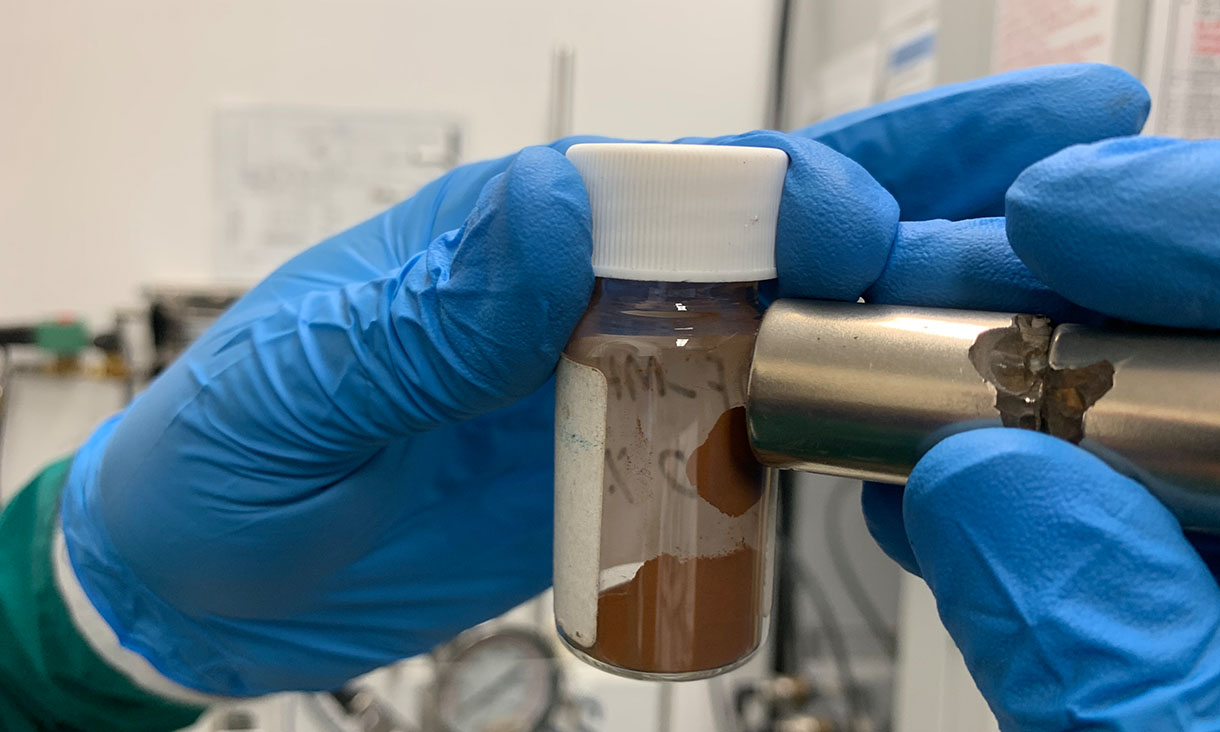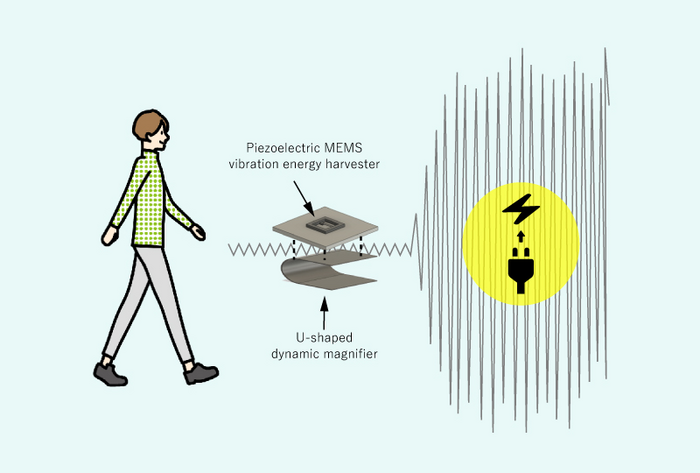
A magnet attracts the material that the team used to make adsorbents that remove microplastics and dissolved pollutants from water.
Credit: RMIT University
Researchers at RMIT University have found an innovative way to rapidly remove hazardous microplastics from water using magnets.
Lead researcher Professor Nicky Eshtiaghi said existing methods could take days to remove microplastics from water, while their cheap and sustainable invention achieves better results in just one hour.
The team says they have developed adsorbents, in the form of a powder, that remove microplastics 1,000 times smaller than those currently detectable by existing wastewater treatment plants.
The researchers have successfully tested the adsorbents in the lab, and they plan to engage with industry to further develop the innovation to remove microplastics from waterways.
“The nano-pillar structure we’ve engineered to remove this pollution, which is impossible to see but very harmful to the environment, is recycled from waste and can be used multiple times,” said Eshtiaghi from the School of Engineering.
“This is a big win for the environment and the circular economy.”
How does this innovation work?
The researchers have developed an adsorbent using nanomaterials that they can mix into water to attract microplastics and dissolved pollutants.
Muhammad Haris, the first author and PhD candidate from the School of Engineering, said the nanomaterials contained iron, which enabled the team to use magnets to easily separate the microplastics and pollutants from the water.
“This whole process takes one hour, compared to other inventions taking days,” he said.
Co-lead researcher Dr Nasir Mahmood said the nano-pillar structured material was designed to attract microplastics without creating any secondary pollutants or carbon footprints.
“The adsorbent is prepared with special surface properties so that it can effectively and simultaneously remove both microplastics and dissolved pollutants from water,” said Mahmood from the School of Science.
“Microplastics smaller than 5 millimetres, which can take up to 450 years to degrade, are not detectable and removable through conventional treatment systems, resulting in millions of tonnes being released into the sea every year. This is not only harmful for aquatic life, but also has significant negative impacts on human health.”
What are the next steps?
Developing a cost-effective way to overcome these significant challenges posed by microplastics was critical, Eshtiaghi said.
“Our powder additive can remove microplastics that are 1,000 times smaller than those that are currently detectable by existing wastewater treatment plants,” she said.
“We are looking for industrial collaborators to take our invention to the next steps, where we will be looking at its application in wastewater treatment plants.”
Original Article: Magnetic material mops up microplastics in water
More from: Royal Melbourne Institute of Technology
The Latest Updates from Bing News
Go deeper with Bing News on:
Removing microplastics
- What are microplastics doing to human health? Scientists work to connect dots
To shed light on the health impacts of microplastics more conclusively, scientists aim to do experiments such as removing all sources of plastics from a family's household to check for the effects.
- What are microplastics doing to human health? Scientists work to connect the dots
People unknowingly ingest microplastics from what we eat, drink and breathe. Some scientists fear exposure to microplastics could increase vulnerability to heart disease, cancer and other illnesses.
- Federal and State Efforts to Address Synthetic Microfiber Pollution from Textiles
The EPA also plans to increase and coordinate research that will support the development of best management practices and technologies to remove microplastics (and microfibers) from wastewater and ...
- How microplastics can impact health, as plastic wet wipes to be banned in UK
who had undergone surgery to remove it. They discovered micro or nanoplastics in more than half of the samples. It was also found that participants who had microplastics in their plaque sample were ...
- These 3D-Printed Clay Coffee Cups Are Disposable, but Can They Save Us From Microplastics?
GaeaStar’s 3D-printed disposable clay cups are available in the US for the first time today, but only at Verve Coffee shops in San Francisco.
Go deeper with Bing News on:
Microplastics
- Researchers uncover new oceanic locations where microplastics are accumulating: 'Global initiatives are necessary to conserve these rich ecosystems'
If coral reefs die or dwindle in health, whole ecosystems could be affected. Researchers uncover new oceanic locations where microplastics are accumulating: 'Global initiatives are necessary to ...
- Toxic chemicals from microplastics can be absorbed by the skin, study finds
A new study used 3D human skin-equivalent models to examine how flame retardant additives in microplastics are absorbed by the skin. The findings show that several flame-retardant additives passed ...
- Breaking the Skin Barrier: Scientists Discover New Health Risks of Microplastics
New research indicates that toxic chemicals added to plastic materials for flame resistance can enter the body through the skin by contact with microplastics. The study offers the first experimental ...
- 5 Ways To Reduce Your Microplastics Exposure In The ‘Plasticene’ Era
Emerging research shows microplastics—which are everywhere—are linked to health problems. Here are five ways to reduce your microplastics exposure.
- Earth Week underway as UN committee debates plastics and microplastics. Here's why.
Plastic has become ubiquitous in our environment. It's now considered "a crisis of global proportion," according to as United Nations' committee.










